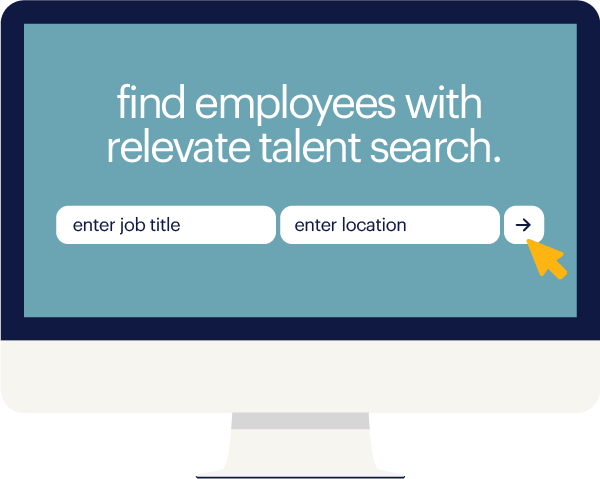While forecasting supply is typically easier than forecasting demand: In the case of the former, you have some control; in the case of the latter, you don't. But that doesn't change the fact that you'll rue the day you get either of them wrong. Organizations beware: blunders in these areas are costly. Just ask Walgreens or Nike, companies that have suffered forecasting failures to the tune of $1 billion and $100 million, respectively. So, to help you out, let's look at four all-too-common workforce forecasting fails, analyze what's wrong with the picture and show you how to fix it.
1. planning ≠ business goals

Your quarterly forecasting and planning process took place as usual. Only this time, something's gone terribly awry: It's time to execute, but supporting resources aren't where they should be. The root causes are various. Often it's a simple case of business goals rapidly evolving, leaving planning to play catch up.
why it's a problem:
Any kind of misalignment, even a relatively minor one, between workforce planning and big-picture business goals risks seriously derailing your business. At minimum, such a misalignment indicates that you aren't optimizing the allocation of resources — and waste is never good for your bottom line.
solution:
It all starts with the planning process itself. There, first of all, it's imperative that all relevant stakeholders are represented, that they feel their input matters — and that their input is factored into the ultimate decision-making process in a way that's proportionate to potential business impact. That's why, for planning related to, say, growth strategies, safety or talent transitions, many companies turn to workforce consultants for support. Besides bringing neutral perspectives and knowledge of best practices to the table, these experts can help ensure that planning processes drive measurable outcomes down the line.
2. overemphasis on the near term

No matter the scale of your talent needs — whether you're scrambling to backfill for a bevy of roles, or you simply can't find the right fit accountant for your firm in San Antonio — near-term business priorities can easily overwhelm, and hence undermine, your business long-term strategy and vision. After all, practically any talent need feels urgent. And it's easy to see why: When vacancies go unfilled, your core operations and business outcomes both suffer.
why it's a problem:
If you're always rushing from one pressing talent need to the next, without hitting the brakes to rethink strategy and realign on the big picture, that can create a vicious cycle — indeed, perhaps "habit" would be the more appropriate term, because it's a difficult cycle to break. But such an approach is neither advisable, sustainable nor efficient. Shortsightedness, whatever its form, always comes with an increased risk of injury.
solution:
A more robust talent acquisition strategy is the only effective way to counter this tendency — endemic to businesses everywhere — of overemphasizing short-term goals, at the expense of broader goals. The solution? You'll need to not only expand your talent pool and build a pipeline of candidates, but also move the needle on engagement and retention as well.
3. lack of communication (and buy-in) internally

After extensive planning, presentations and meetings with vendors, you managed to convince the higher-ups to greenlight your big digital-transformation-of-the-workforce initiative (and give you the necessary budget). One hitch: Now that you've executed, adoption is a problem — because the results you've seen so far have been a disappointment.
why it's a problem:
Solutions sometimes look great on paper (or for that matter, on PowerPoint slides), but problems around communication and buy-in chronically undermine their success down the line. At the core, these are problems around execution. After all, what good is a new tool unless people clearly understand the value it adds or how to use it.
solution:
Evangelize the project with senior stakeholders as early as possible, implementing a plan for leaders in different areas to roll out the initiative and ensure their teams are all up to speed. You'll also need to plan ahead to make sure any necessary training is readily available; otherwise, you'll face potential skills gaps in the future. Finally, consider holding regularly scheduled meetings (say, monthly or quarterly) to review your progress with all relevant stakeholders and course-correct as necessary. Taken together, these steps should go a long way toward ensuring essential buy-in and preventing communication breakdowns.
4. decision-making is divorced from data

The CFO of your company has a really good feeling about the first candidate interviewed, despite the fact that the candidate didn't line up with your company's latest D&I initiatives. With nothing more to go on than one person’s intuition, your C-suite isn’t becoming more diverse or inclusive — despite all that talk about change.
why it's a problem:
Hunch-based decision-making went out with the divining rod. Besides, if you aren't leveraging data, it isn’t just hard to move the needle on talent challenges from D&I to engagement — in fact, it becomes impossible to even know if your efforts are working out or not.
solution:
Strategic partners armed with the latest data-driven hiring technologies can help you close the loop on data, empowering all members of your workforce, from senior leaders on down to front-line personnel, with tools and tech. It's the most effective shortcut to a future in which you're actually harnessing data, and leveraging it in ways that deliver significant business value.
key takeaways
Forecasting is never easy, as the scenarios we've discussed in this article make clear, and any company confronting similar problems in their operations today should consider the value of a strategic partnership with staffing firms like Randstad.
In the interim, to help you avoid forecasting failures and more, check out our comprehensive workforce management learning center. It's full of actionable insights, tips and guidance to help you get — and stay — ahead.








